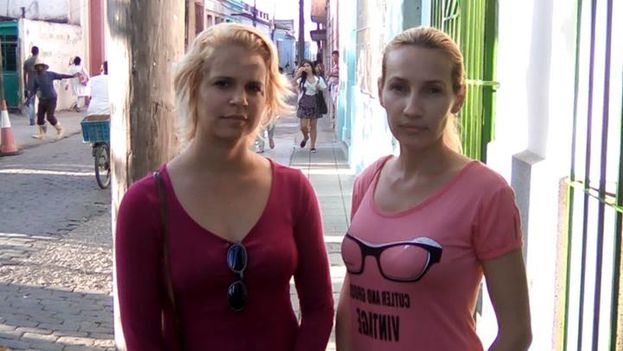OVF: At the beginning, an independent worker was seen as a dissident, an opponent. They gave us the name of “Merolicos” after a character in a [Mexican] telenovela from that time. At that time everything that was outside the state was viewed badly because with the triumph of the Revolution here, everything disappeared, even the shoeshine boys**. But I have been a person who never had a desire to leave the country, on the contrary, I have preferred to stay here and to continue to defend it. To me, the idea is to better it, not to criticize the government.
14ymedio: What types of articles do you produce.
OVF: Almost everything used in a house, from electrical boxes and spare parts from different appliances, such as washing machine agitators and pullies and even spools of thread.
14ymedio: Did you receive training for this work?
OVF: My work has nothing to do with what I studied, I was a technician in a machine shop. However, everything I use for my work I make myself, from the tools and molds to the machines to shape plastics or rewind cable reels, all in a general sense, I do it not only because I need to, but I like to make things.
14ymedio: What role does independent work play in Cuban today?
OVF: A high percentage of society lives off their own work. In addition to the official worker, the helpers benefit from it, those who sell the product, and their families, children, and the elderly.
14ymedio: Do you think the State appropriately values the work of the self-employed?
OVF: The State could be more appreciative of the work of entrepreneurs. I have seen electrical boxes made outside the country, stamped with “Made in Italy.” These electrical boxes come from the State warehouses and agencies, the State imports them but they’re no different from the ones I make. Why go to another country to find these products, if there are independent workers producing this type of item? We do it with the same quality and the with recycled plastic, which is more ecological and economical. But the State fears the people getting rich.
14ymedio: Do you think the category* “producer-seller of useful household articles” really defines your occupation?
OVF: The term with which they define me doesn’t seem right. I consider myself more of a goldsmith, that is the profession that includes manual labor. Before, we paid 100 pesos for a license to be an artisan that includes almost everything you can make and sell, but now you need about five licenses to do the same thing, because that way the National Office of Tax Administration (ONAT) gets more money. It allows the inspectors to have greater control over the worker. But the State fears people getting rich.
14ymedio: What role will the private sector play in the development fo the country?
OVF: The future of this country is in independent workers, because despite being persecuted by inspectors, we are less within the reach of the State and it restricts production, even in its own companies. But the independent worker is not in their hands. I can work however I want, with whatever raw materials and when I want, this gives me a wider margin for creativity.
We are also more aware of the needs of the people. This is a point in our favor because the State is distant from others, isolate, but the independent worker knows what they can sell, because it is what they themselves need, their family, their neighbor, the people they know.
14ymedio: And how does the US embargo affect your work?
OVF: The blockade is a political strategy that the leaders of this country use to justify everything bad they do. They caused the blockade to become law when they shot down the American [Brothers to the Rescue] planes in 1992. They did it precisely for that reason, to have an external enemy to blame. However, the blockade has benefitted the self-employed workers. Thanks to it Cuba has not experienced the consumer society and so it has developed the independent worker.
In developed countries people use things and then throw them away. Here we have learned to live thirty years with a Russian washing machine. When it breaks an independent worker is the one who has the parts. We have learned to engineer it and that makes us stronger. When an independent worker can develop their industry everyone wins. Now all that’s lacking is that they let us do it and it has nothing to do with the United States blockade.
Translator’s note:
*Cuba has a limited list of allowed lines of work for which people can get licenses to work independently. This is one of them.
** Fidel Castro moved quickly to nationalize major industries and foreign-owned business, and finally, in 1968 in the so-called Revolutionary Offensive, eliminated all private enterprise, taking over “mom and pop” businesses and, notably, even shoeshine boxes.

![]() 14ymedio, Havana, 22 May 2019 — Cuban authorities prevented several collaborators of the magazine La Hora de Cuba, Inalkis Rodríguez, Iris Mariño and Sol García, from boarding a flight to attend an event in Trinidad and Tobago on the participation of women, to which they had been invited by the Simone de Beauvoir Leadership Institute.
14ymedio, Havana, 22 May 2019 — Cuban authorities prevented several collaborators of the magazine La Hora de Cuba, Inalkis Rodríguez, Iris Mariño and Sol García, from boarding a flight to attend an event in Trinidad and Tobago on the participation of women, to which they had been invited by the Simone de Beauvoir Leadership Institute.















